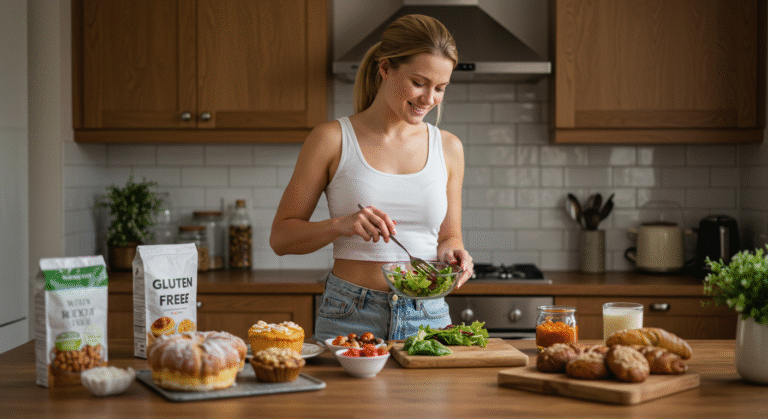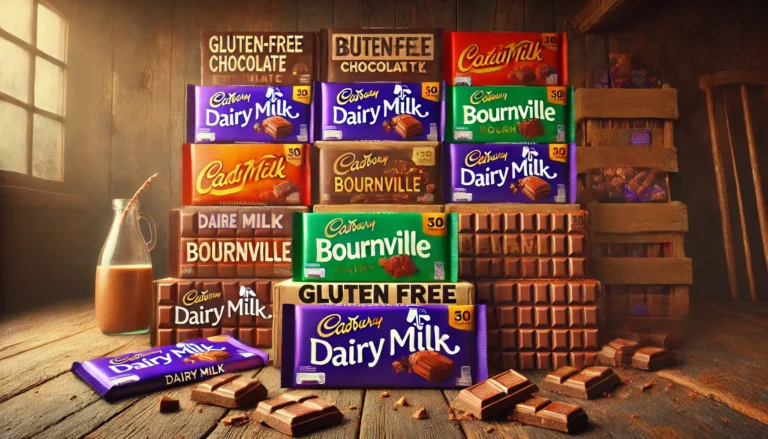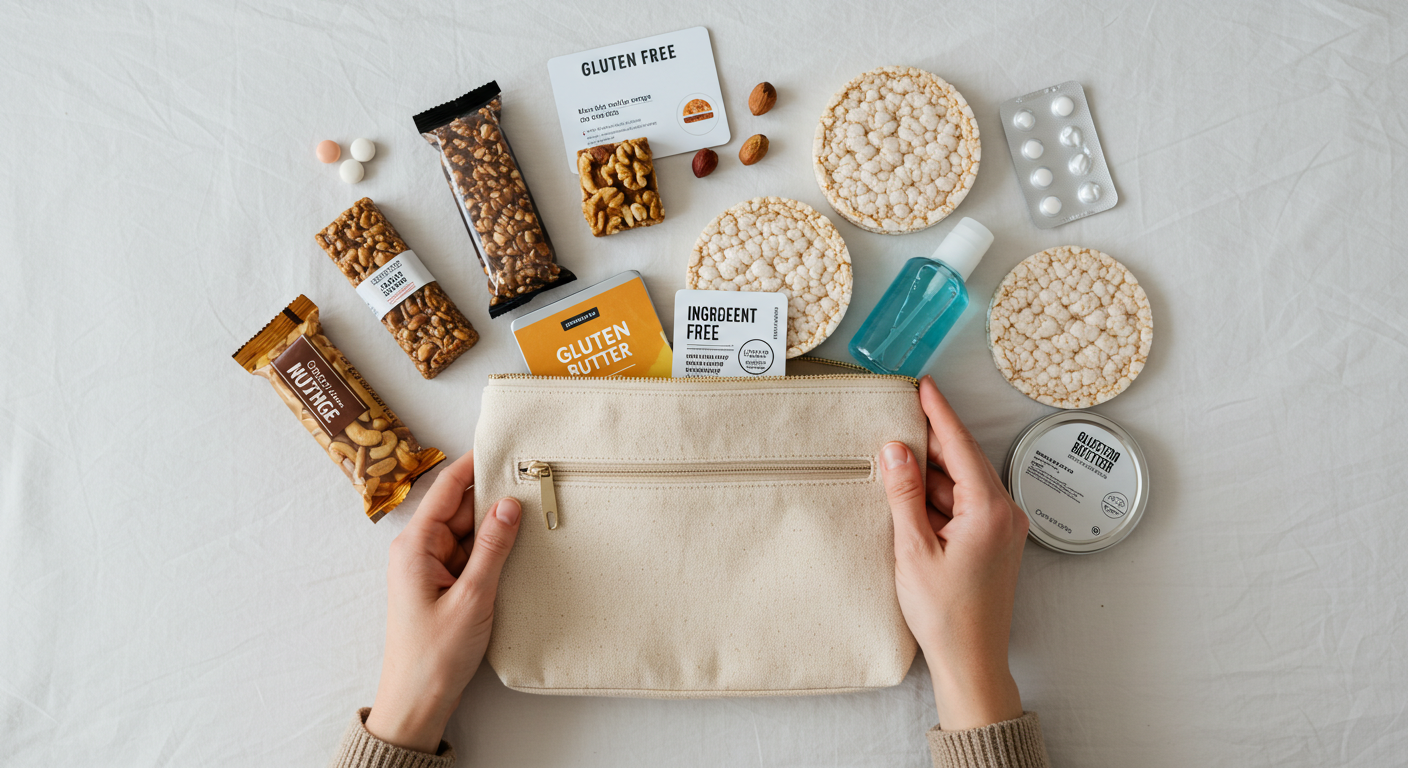
Living with coeliac disease or gluten sensitivity means you can never fully rely on food being available or safe when you are away from home. Whether you are flying across the country, heading into the office, or just going on a day out, preparation is your best protection. That is where a gluten-free emergency kit comes in.
Knowing how to pack a gluten-free emergency kit gives you peace of mind and control over your health. When delays, cancellations, or limited food options appear, you will have everything you need to stay safe and satisfied without stress.
1. Why a Gluten-Free Emergency Kit Matters
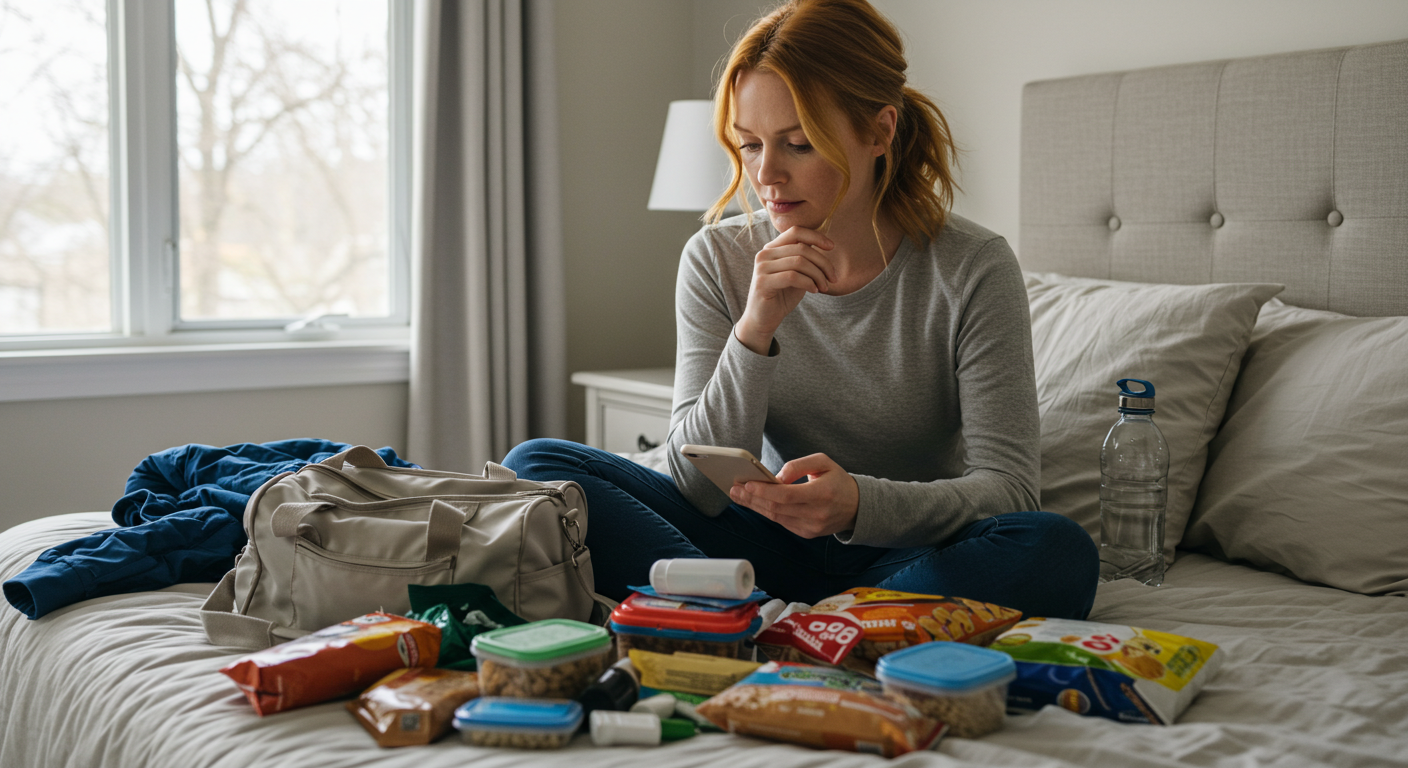
If you have coeliac disease, even a small amount of gluten can trigger symptoms and long-term damage. But when you are out and about, safe food is not always easy to find. A train may be delayed, a catered work event may not provide gluten-free options, or your hotel room may not have cooking facilities.
A gluten-free emergency kit helps you stay prepared in:
-
Travel disruptions or flight delays
-
Office meetings or unexpected overtime
-
Road trips through rural areas
-
Conferences, events, and weddings
-
Staying in hotels with limited food service
Having your own food means you are not at the mercy of others. You can eat safely, keep your energy up, and avoid unnecessary risk.
2. Essentials to Include in Every Kit
Start with simple, shelf-stable items that are easy to carry and do not require refrigeration.
Snacks and quick meals:
-
Gluten-free snack bars (check UK-approved brands like Trek, Nakd, Perkier)
-
Mini packs of popcorn, rice cakes, or oatcakes
-
Gluten-free crackers and peanut butter sachets
-
Trail mix with dried fruit, nuts, and seeds (watch for hidden gluten)
-
Boiled eggs or sealed cheese portions for short trips
-
Canned tuna, salmon, or beans with ring-pulls
-
Instant porridge pots or soup cups made with gluten-free oats
Other essentials:
-
Bottled water or a reusable water bottle
-
Napkins, tissues, hand wipes, and antibacterial gel
-
Spoon, fork, or multi-use travel cutlery
-
Tea bags or herbal infusions
Your emergency kit should be quick to access, easy to carry, and stocked with foods you actually enjoy.
3. Choosing the Right Container or Bag
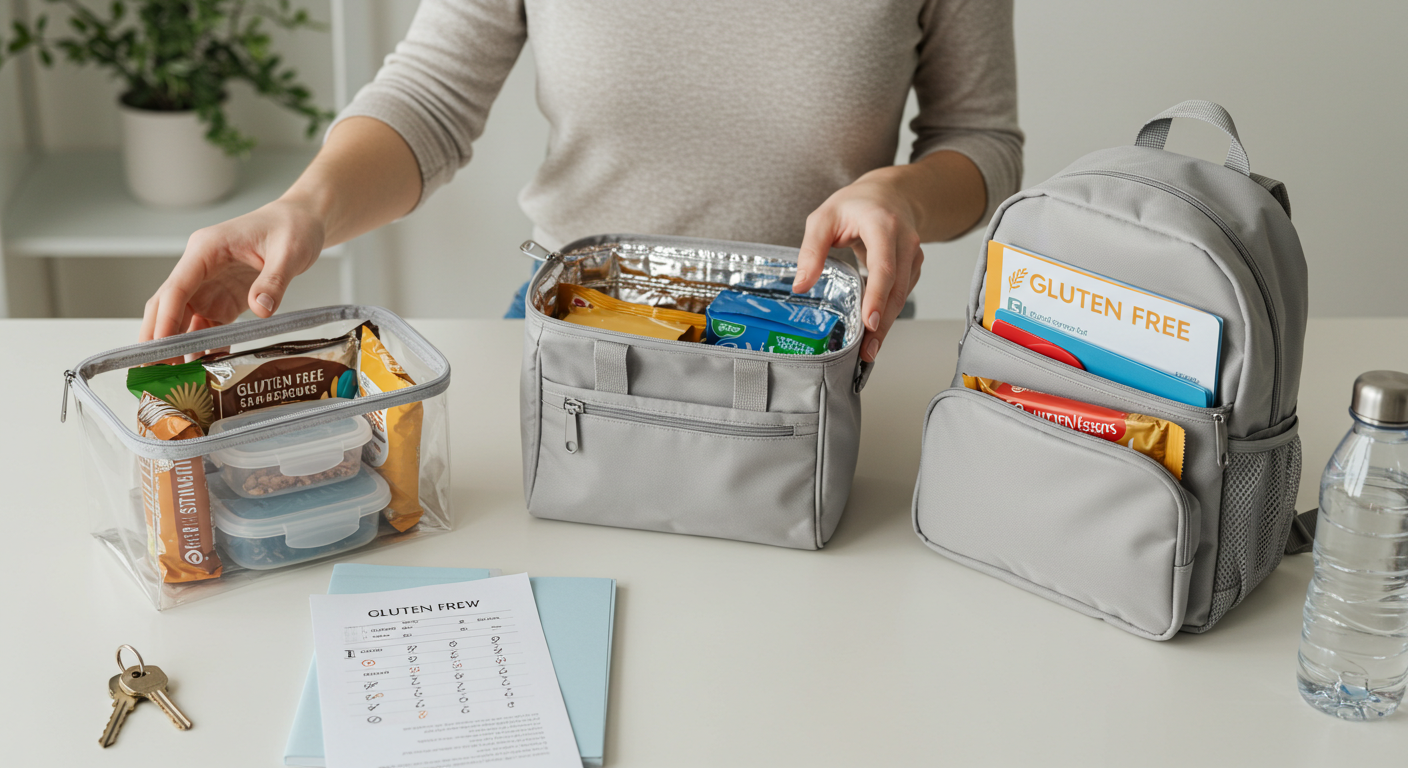
Your gluten-free emergency kit does not need to be bulky. The best container is something that fits easily into your work bag, handbag, rucksack, or carry-on luggage.
Features to look for:
-
Insulated lining to keep items cool or warm
-
Leakproof pockets for anything liquid
-
Separate sections to avoid crushing food
-
Easy-to-clean materials
-
Lightweight but sturdy
Some people use small lunch totes or zip pouches. Others keep items in stackable containers or labelled boxes. You can also add a note or sticker that says “gluten-free” so others know not to mix up your food.
4. Travel-Specific Gluten-Free Additions
Travelling presents a special set of challenges. Airports, trains, and service stations often have limited gluten-free choices, especially if you need to avoid cross-contamination.
Things to pack:
-
Gluten-free oat pots or noodle cups that only need hot water
-
Rice cakes, dried fruit packs, and vacuum-sealed cooked chicken
-
Airline-friendly snacks that meet liquid rules (no dips or yoghurts over 100ml)
-
Gluten-free dining cards that explain your needs in multiple languages
-
A reusable coffee cup for hot drinks or soups
-
Mini sachets of condiments you know are safe
If staying in a hotel, bring along breakfast items like porridge pots, sealed cereals, or gluten-free bread. A travel kettle and bowl can be helpful for simple meal prep in your room.
5. Workday Gluten-Free Kit Must-Haves
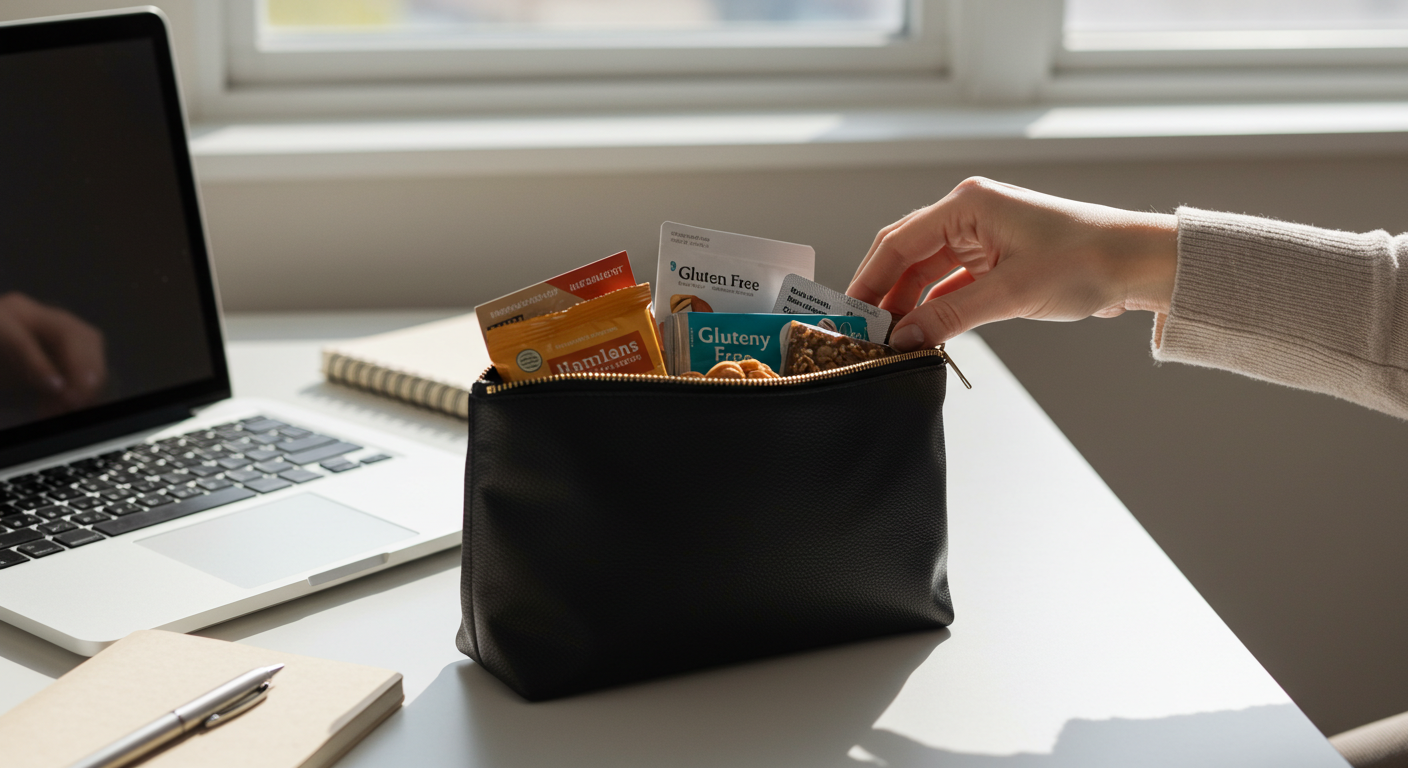
Even if you work in an office with a fridge or kitchen, do not assume there will be something gluten-free available when you need it.
What to keep in your desk or locker:
-
Gluten-free cereal bars or protein bites
-
Packets of nuts, popcorn, or fruit leather
-
Rice cakes or crackers with nut butter
-
Tins of beans or fish with a pull ring
-
Instant soup or porridge pots
For meetings or catered events, it helps to let organisers know in advance. But always bring a back-up in case plans change. If you are invited out for lunch, keep a snack on hand in case the menu lacks safe options.
6. Preventing Cross-Contamination on the Go
Keeping your gluten-free food safe is just as important as choosing the right items. When travelling or working in shared spaces, cross-contamination can easily occur.
Tips to stay safe:
-
Carry a clean cloth, antibacterial wipes, or disposable placemats to prepare a surface
-
Use your own cutlery and avoid shared serving utensils
-
Do not leave open packets in communal fridges
-
Keep food in sealed containers or resealable bags
-
Label your food if others may be tempted to take some
If you use shared office microwaves, consider microwavable containers with a steam vent or use your own plate cover.
7. Planning for Longer Trips and Hotel Stays
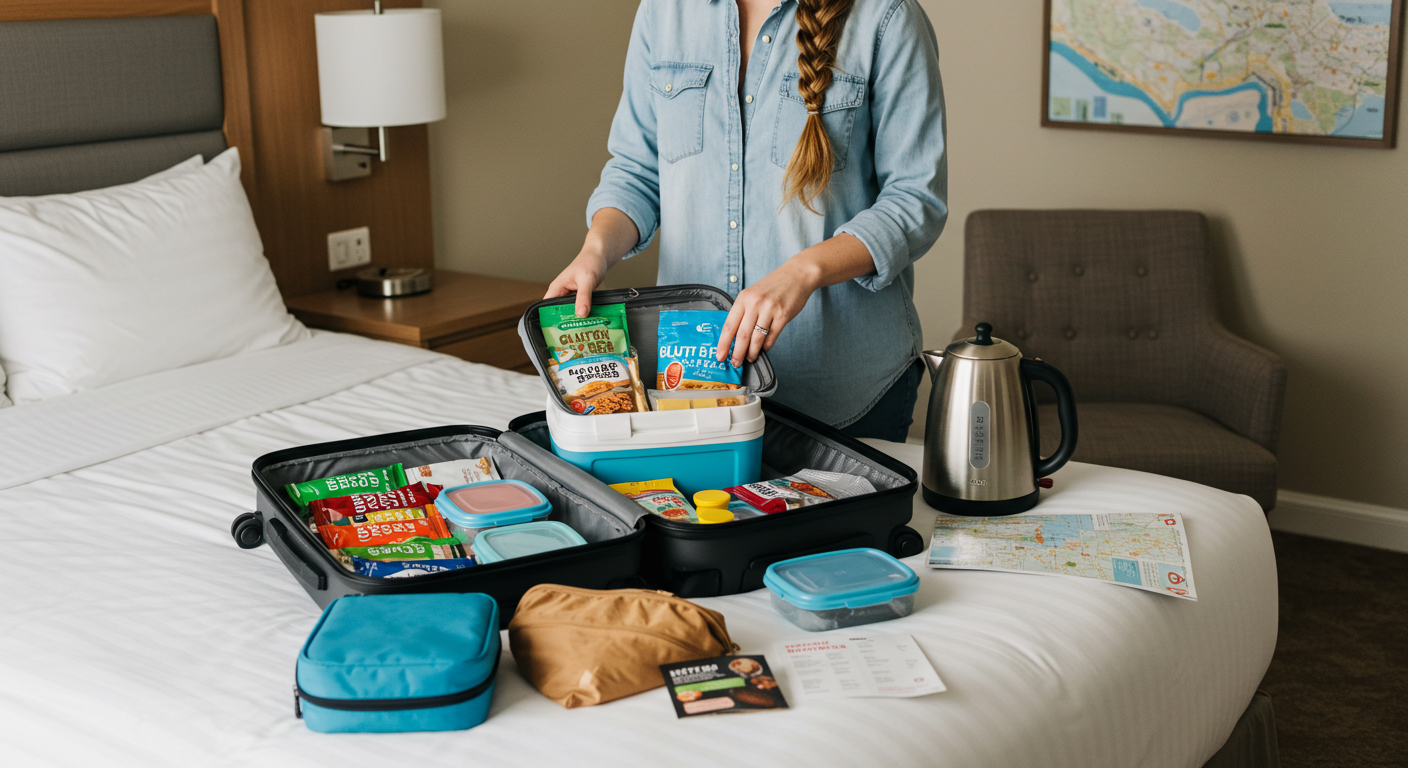
If you are away from home for a few days or more, you will need to scale up your gluten-free kit into a full plan.
Think ahead:
-
Pack 1 to 2 days of gluten-free food in case of emergencies
-
Bring a laminated card with your dietary needs written clearly
-
Search for local supermarkets or health food shops before arrival
-
Book self-catering accommodation where possible
-
Carry spare food in your hand luggage in case of airport delays
Consider bringing a cooler bag or collapsible box if you need to transport fresh food for a few hours.
8. Helpful Gluten-Free Brands and Products to Keep Handy
The UK has many great gluten-free brands that are ideal for emergency kits. Choose items that are certified gluten-free and clearly labelled.
Popular and reliable brands:
-
Nairn’s: oatcakes, biscuit breaks, snacks
-
Perkier: bars packed with protein and fibre
-
Eat Real: lentil or quinoa crisps
-
Trek and Nakd: fruit and nut snack bars
-
Schar: mini crackers, bread rolls, and sweet biscuits
-
Gluten-Free Kitchen: baking mixes and muffins
-
Creative Nature: allergy-safe flapjacks and baking kits
It is worth testing these products at home first to make sure they suit your taste and do not upset your stomach.
9. Tips for Keeping Your Kit Stocked and Fresh
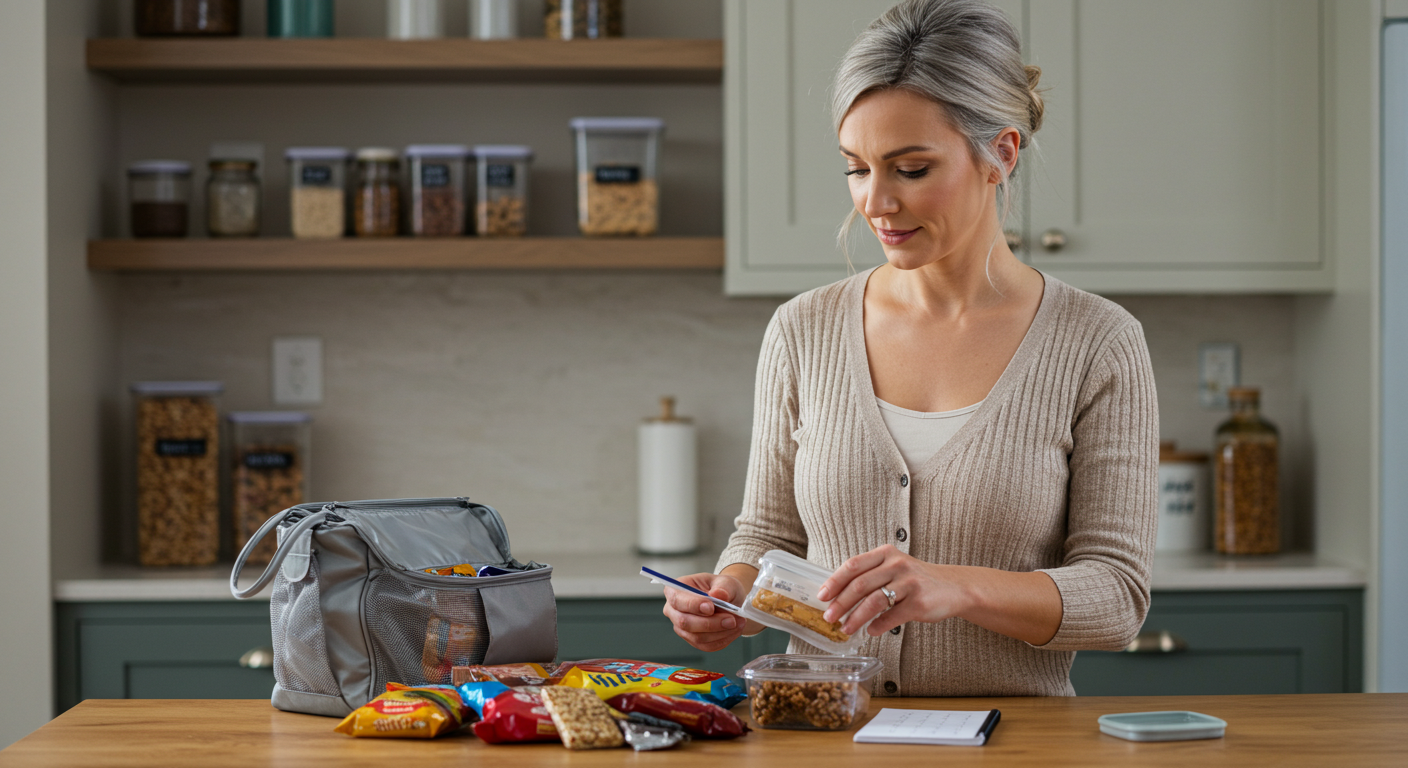
Your gluten-free emergency kit is only helpful if it is well maintained. Expired snacks or empty pouches are no use in a pinch.
How to stay organised:
-
Set a reminder to check your kit monthly
-
Keep a checklist of core items you want stocked
-
Note expiry dates when you pack items
-
Rotate snacks between your emergency kit and daily use
-
Restock after any trip or event where you use your kit
Use small labels to track when items were packed or bought. This will help you avoid waste and keep your supplies fresh and safe.
Final Thoughts: How to Pack a Gluten-Free Emergency Kit With Confidence
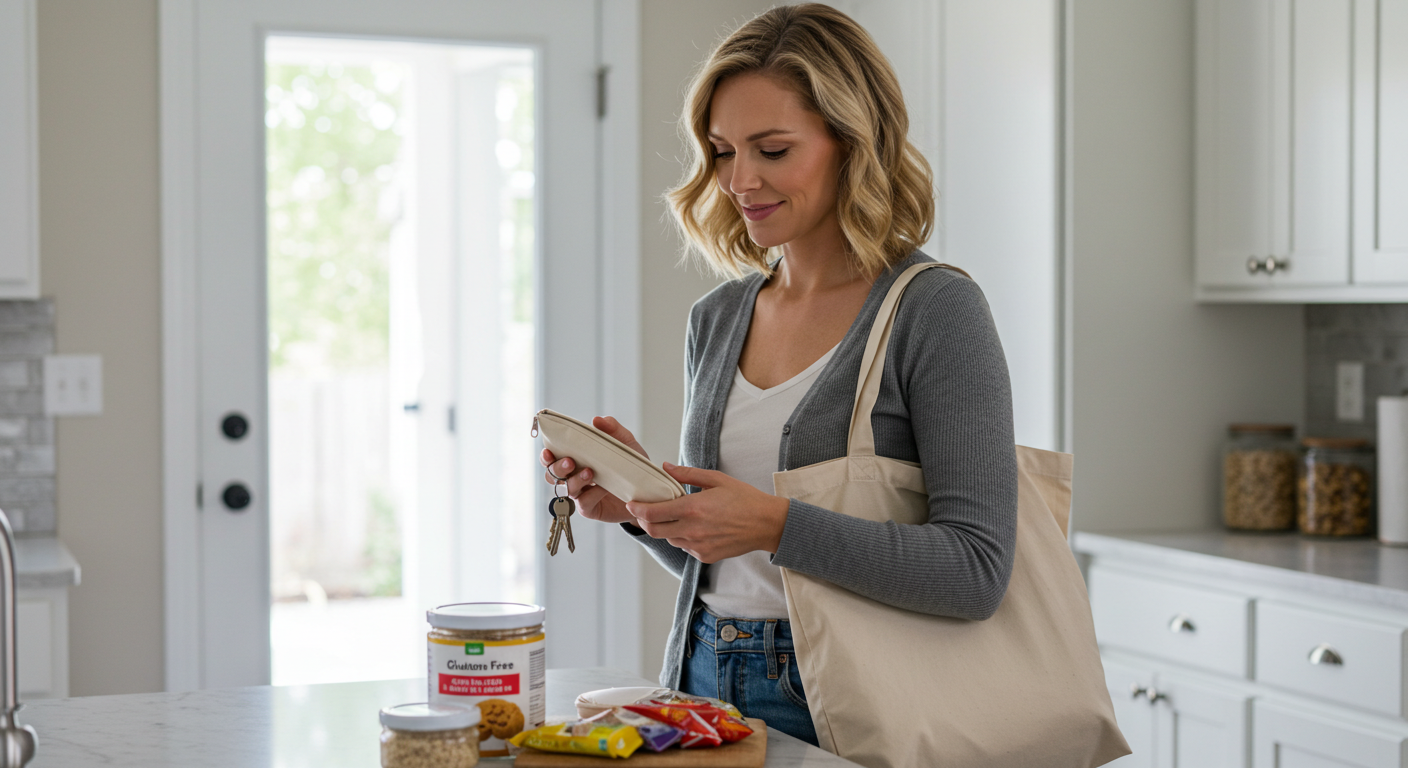
Knowing how to pack a gluten-free emergency kit can make all the difference between a stressful day and a smooth one. Whether you are travelling, working late, or just on the go, being prepared means you are always in control.
With the right balance of portable food, hygiene tools, and personal favourites, your emergency kit can be simple to use and easy to maintain. It is more than just a backup plan. It is a source of confidence and comfort that supports your gluten-free lifestyle every day.
Preparation does not have to be complicated. Start small, stay consistent, and customise your kit to suit your needs. Over time, you will find your own rhythm and routine, making it easy to stay safe wherever life takes you.
